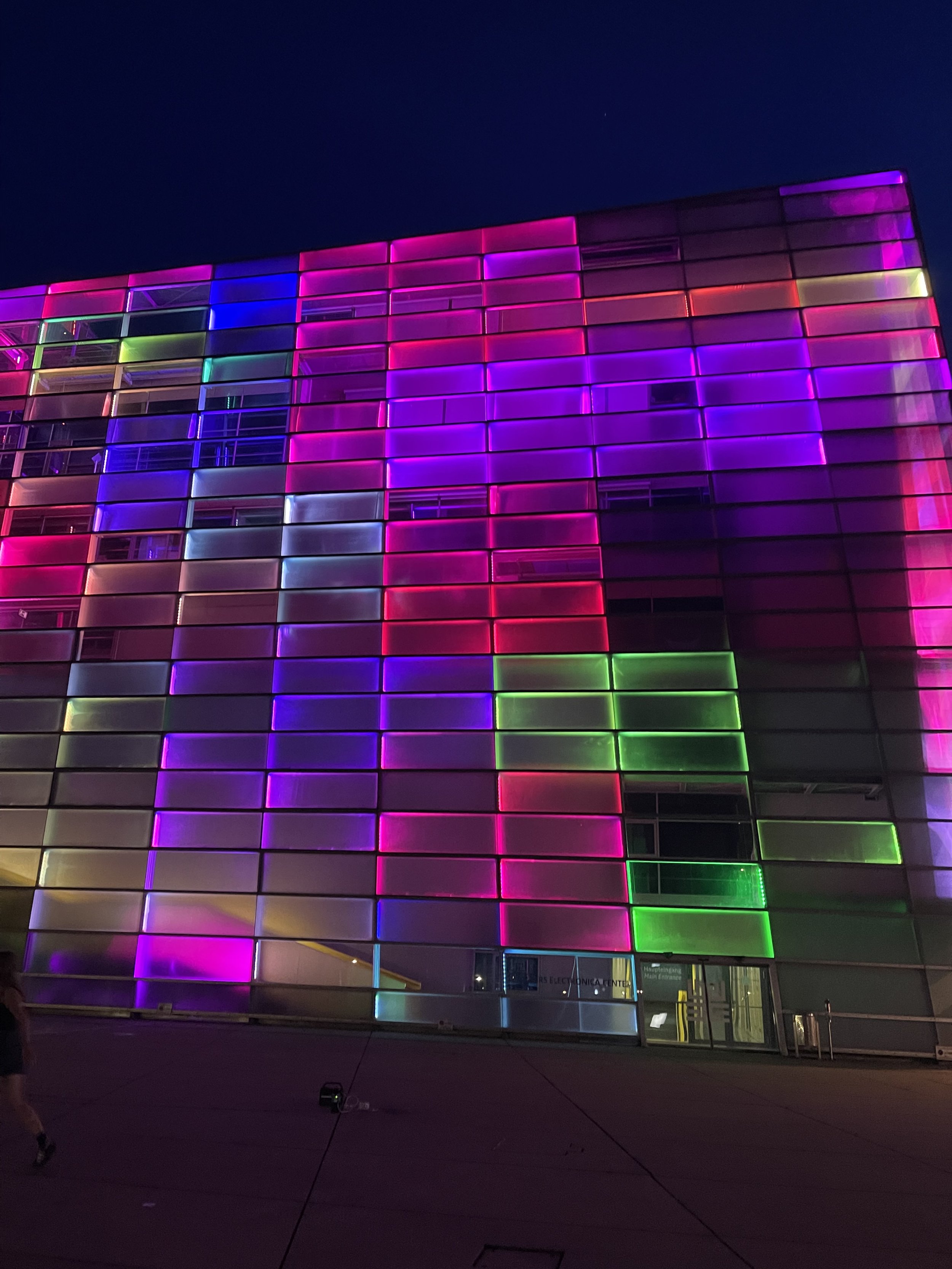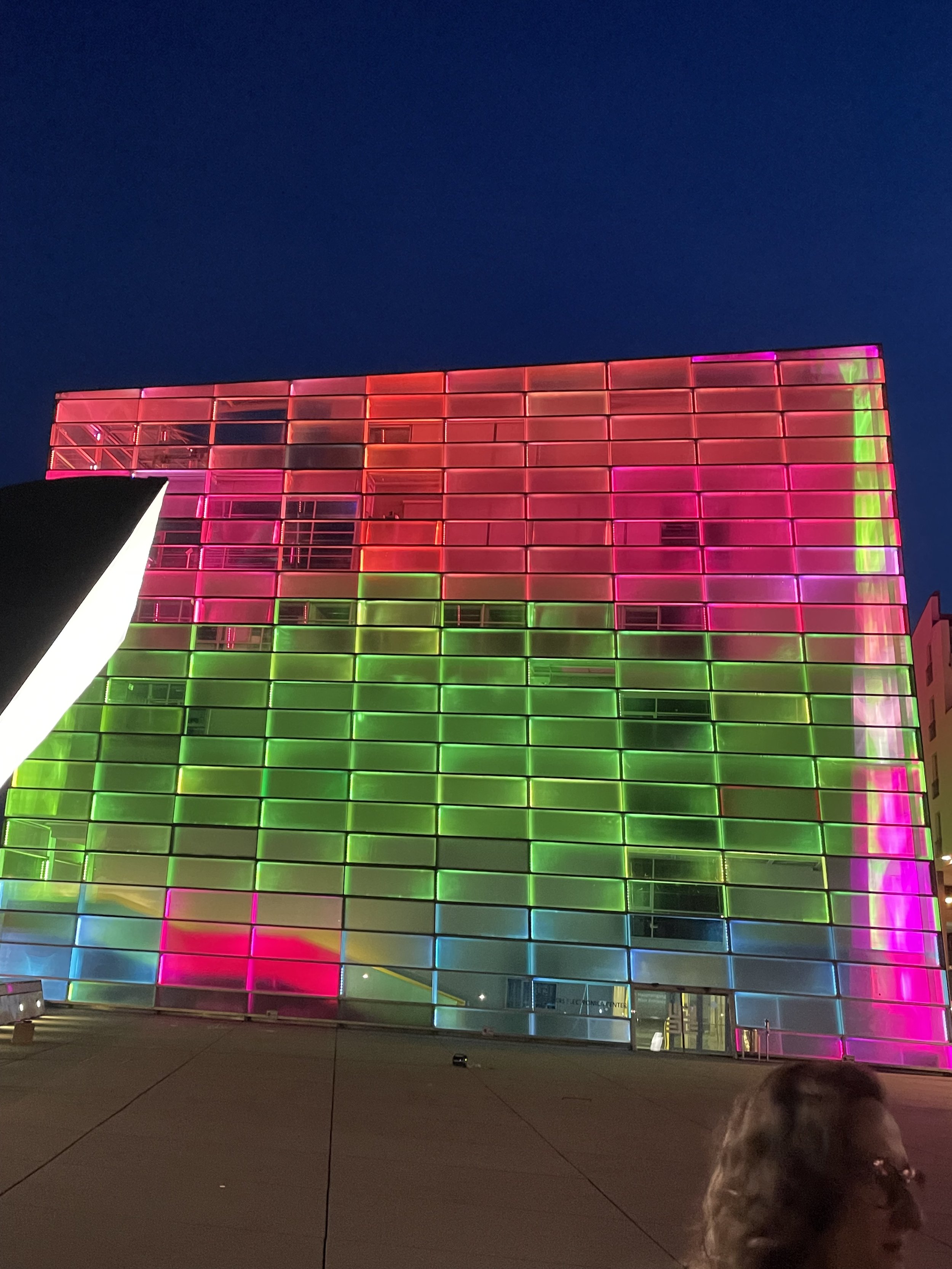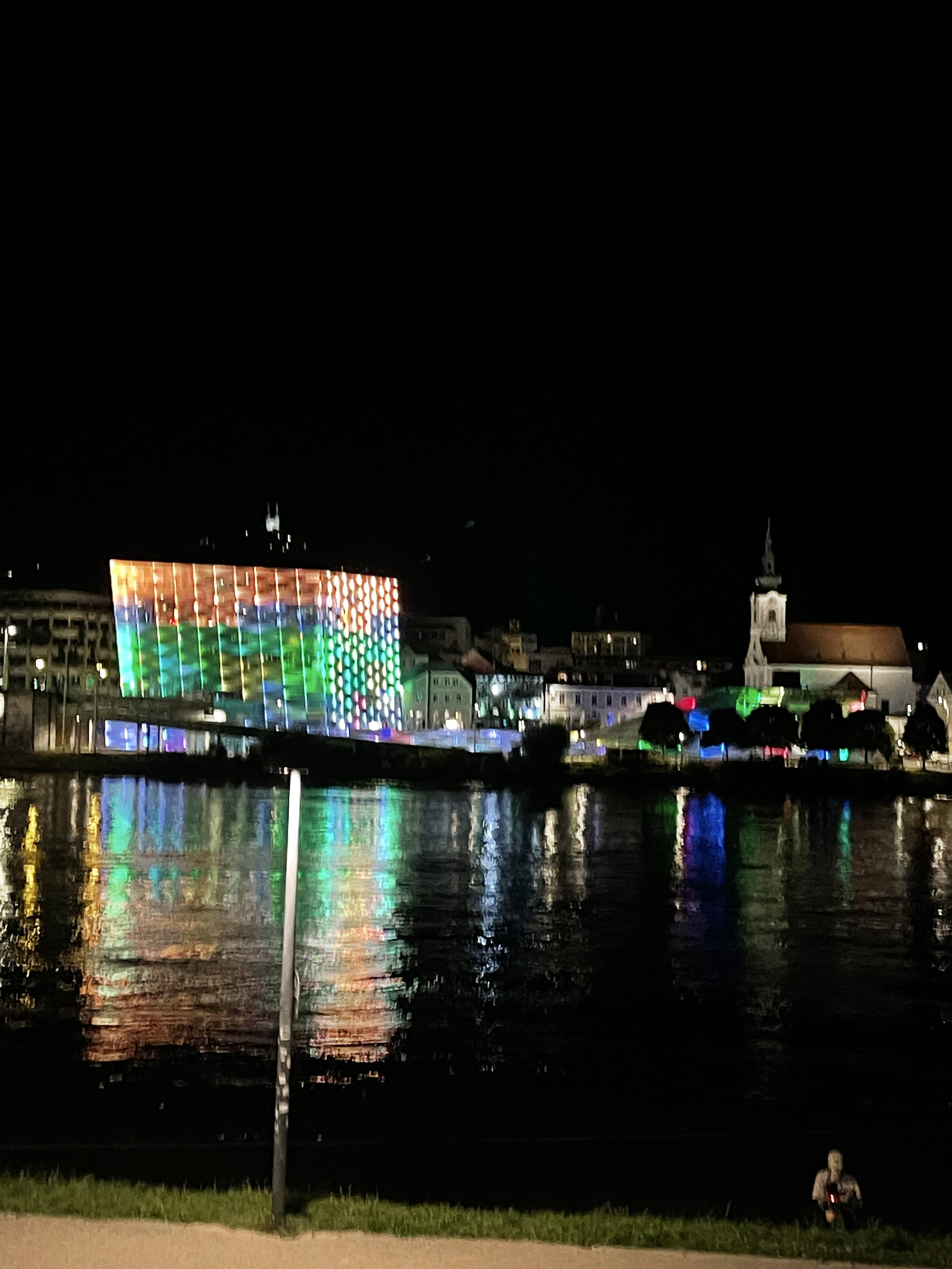Software: Processing
Overview
While studying abroad in Vienna over the summer, one of the projects for a creative coding class was to program a digital exhibit that would be displayed/played on the facade of Ars Electronica, an Austrian cultural, educational and scientific institute active in the field of new media art, founded in Linz in 1979. The museum is covered in rectangular panels with LED lights embedded in each panel.
During the program, we had three days to assemble teams, come up with a concept, and work together with the Ars Electronica staff to program a display using Processing (a programming language) that would be presented at the end of the three days. Each night, each group was only able to test their program on the facade once, meaning there were only two practice “tests” before the final exhibition on our third day in Linz.
Concept (“Threads”)
“Threads” is an interactive display that uses motion sensors to track visitors’ movement and create a colored pathway, or “thread”, to show where a person has traveled. When two or more paths cross, an intersection is created, blending the colors at the connection together. Over time, the connection points grow to cover the entirety of the facade, creating a display composed entirely of visitors’ intersecting colors. Once the facade is completely immersed in color, the display restarts and turns back to black, ready to draw new connections.
Artists’ statement
“Threads” visualizes interactions between individuals as they move through the display and, more generally, through life. The goal is to create connections that grow and change, as well as reflect their creators’ respective journeys to the point of intersection. As society continues to adopt new technologies and forms of communication that promote the digitization of daily life, we aim to remind viewers the importance of in-person connections and real-world contact that bring us closer to others. “Threads” is a platform that stitches together this modern desire for digital media and our innate human need for community. Our program is designed to bond people together and show that each of us is a product of accumulated growth and change.
Pictures
Videos
Ars Electronica video
Reflection
Reflecting on “Threads”, I realize how rewarding it was to contribute to something as meaningful as a display on the facade of Ars Electronica. The challenge of using Processing, a programming language I had just started learning, added to the sense of accomplishment, especially as I watched our concept come to life on the museum. Working in teams was another highlight of the project. Collaborating with other students, along with the Ars Electronica staff, taught me the power of collective creativity. Each of us brought different skills and perspectives to the table, and the Ars Electronica staff was extremely helpful in answering our programming questions and playing an active role in the brainstorming process.
Still, the experience wasn’t without its challenges as we had only three days to conceptualize, program, and test the display. The limited testing window added pressure, as we had to make significant progress with minimal opportunities for refinement. Despite these constraints, we were still able to practice good design process and develop a final product that achieved our initial goal of creating connection. Overall, the project pushed me to think creatively, adapt quickly, and appreciate the nuances of working within a team. Watching our vision come to life on such a prominent platform, while tackling the technical and time-based hurdles, made the process both challenging and immensely fulfilling.












